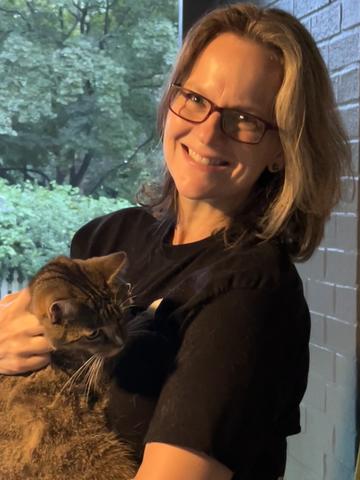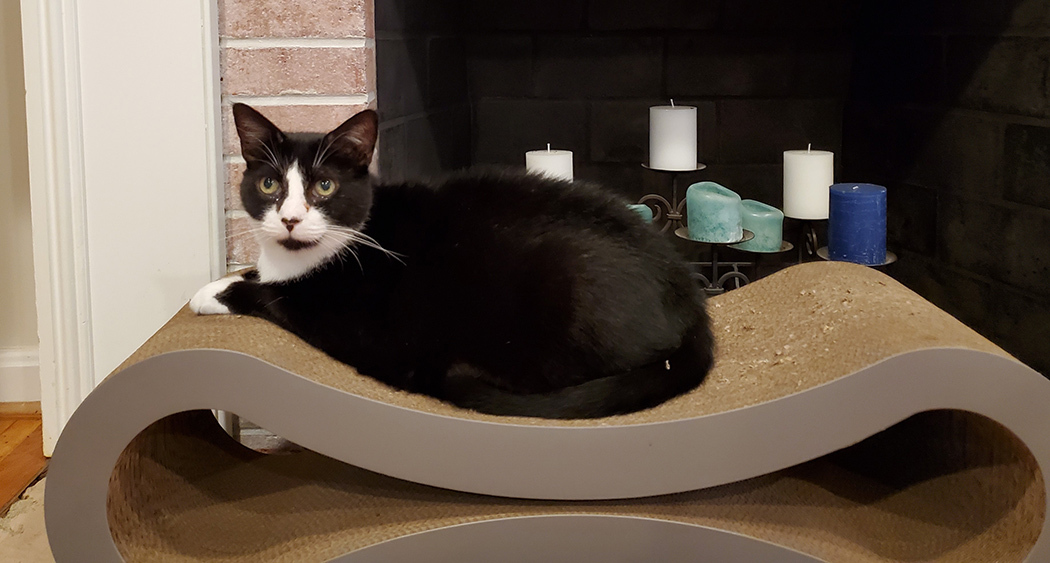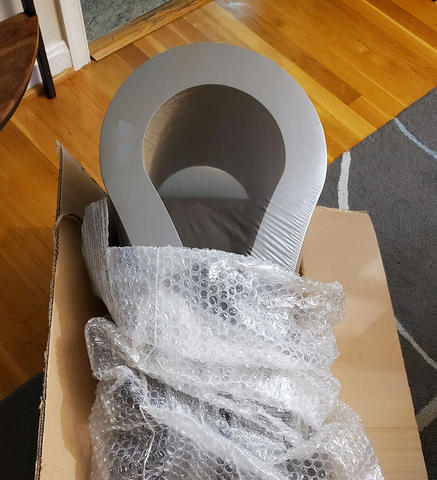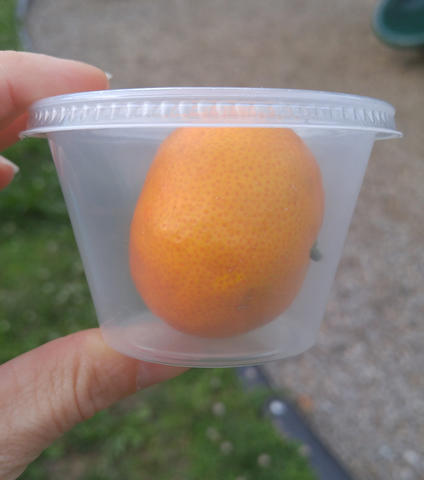Taking Measure
Just a Standard Blog
A Polymer Scientist Wrestles — Literally and Figuratively — With the Frustrations of Plastic Packaging

Well before I became NIST’s lead for the circular economy — or the idea that we should keep materials in use and reuse for as long as possible rather than throwing them away — I was a polymer scientist and an observer of plastic packaging. Polymers are very large molecules and the main ingredient in most plastics and many other modern materials.
Plastics and polymers are an essential part of life, but we can be more thoughtful about how much of them we use and discard.
As a consumer, I like the idea of reducing my consumption impacts and have tried to make choices factoring in the amounts of waste they would force me to generate — at least within reason. I am a mediocre gardener and sewer, for example. My family doesn’t regularly hunt, fish or otherwise meet its needs outside the traditional, suburban American lifestyle.
As I was out shopping for the holidays recently, I noticed all these odd, seemingly unnecessary packaging choices. Why is the gym locker padlock I bought for a stocking stuffer packaged in an infuriating clamshell, when it already has a built-in hook with which to hang it at the hardware store? (I know it’s anti-theft, but it’s still irritating. … So many people cut their fingers and hands trying to get those clamshells off.)
Similarly, why would the food court vendor give me an unpeeled orange inside a plastic container? It already has a phenomenal protective coating.
The latest packaging fail was so ironic to me that I posted the absurdity on social media. I gifted corrugated cardboard scratch posts to our two rescue cats, Chuck Norris and Dorito. The cats like them, and the scratch posts are 100% recyclable. I was disappointed when the latest installment arrived. It was not just in a shrink-wrapped sleeve, but then put inside bubble wrap, and then inside — yes — a corrugated cardboard box.
I can imagine how the manufacturer might have arrived at this packaging choice, but there has got to be a better way. Some cats might like an extra box containing their cardboard thing, but neither of mine seemed to care.

Celebrating the Small Wins in Packaging Design
I still prefer to celebrate the successful improvements.
I received a piece of clothing in the mail in a cleverly designed plastic mailer that required no adhesive, had very little dye or layers and was completely recyclable (that is, if the local store’s film packaging take-back programs are working, which is a blog for another day). The adhesives used to stick paper labels on the outside of those mail pouches make them unrecyclable, unless you cut around it and throw the labeled section in the trash. Those dyes that add colorful logos or otherwise catch your eye on packaging also add contaminating pigments to the recycled product. This lowers the value of the recycled resin that can be produced from it.
Until recently, you may remember that most ginger ale and lemon-lime soft drinks were sold in green bottles, but the green dye made those bottles harder to recycle. Now, they are more often packaged in clear bottles. This change makes the recycling stream cleaner and more efficient.
I also recently bought paper towels at my local big box store. While the last big bundle was a bunch of individually wrapped rolls inside another big bag, this time they removed all the extra film inside the main bag. It even advertised “50% less plastic packaging compared to previous version.”
These are solid wins. They make me happy. I wish more companies would be actively looking for ways to reduce and simplify that were so seamless to the consumer.
Making Packaging Less of a Problem
Even when we are trying to be more responsible shoppers, there is so much about the impacts of the things we buy that we don’t see and can’t control or that are impossible to estimate in the trade-offs of their environmental impacts. There are factors, such as toxicity, climate impact, soil health, land or water use, etc., that we simply can’t know when buying something.

What my NIST colleagues and I do, as public servants and technical experts, is think about the ways we can help everyone in the supply chain do better. We want to set a higher standard and empower simpler, cleaner or less material in packaging. We want more material to come back into the supply chain and be used again.
We think about and research a lot of big questions when it comes to the circular economy. What questions should each step in the supply chain be asking from their supplier, or their customer? What information do they need to make good chemical, material and design choices? Could all the transparent film and bags in the produce section of the grocery store be only one material for the sake of the film recycling market? Better yet, can we agree on just one material or format for plastic bottle labels for ease of recycling? We can do better — much better.
NIST is working to make strides in the circular economy — including the idea that everything we produce should have a pathway back to another life, rather than be simply thrown into a landfill or burned.
For example, we are working on several new methods to help with identifying plastics. This effort includes adding thousands of new pieces of data on additives to our database for a laboratory technique that identifies compounds and measures their amounts, known as mass spectrometry.

We’re also publishing research on how AI might make cheaper, faster devices more powerful and accurate when materials recovery facilities or recyclers need to identify plastic waste. This could make it easier to sort more material into cleaner batches, which in turn means local governments can make more money from selling them. This means more materials can be recovered from the sorting facilities more affordably, keeping them out of landfills or incinerators. There is still so much more to do.
The consequences of not addressing this issue are dire, since the global demand for packaging will soar, so we must do our part. The U.S. is not expected to be a major driver of all that expected growth in demand, but we still need to set an example for how a high-income country can cut back, so that we leak and pollute less.
According to the Organization for Economic Cooperation and Development’s Global Plastics Outlook, the U.S. consumes more plastic and more plastic waste than any other country in its extensive study. The U.S. produces 255.2 kilograms or 562 pounds of plastic per person each year.
The U.S. also creates 220.5 kilograms or 485 pounds of plastic waste per person annually. That’s a little less than 50 cats’ worth of plastic per person!
While that is not all in the form of packaging and other short-term uses, a big chunk of it is — almost two-thirds. In the same study, the OECD reported that the United States has less mismanaged waste than most countries as a percentage of the total, but when we produce so much waste, that number by mass is still large.
Some Packaging Is Necessary, but We Can Minimize Waste
I am going to speculate that we will always want our paper products delivered (by store or mail) in some sort of moisture-barrier film. Assuming that is true, we will need a lot of film to deliver all those products to 325 million-plus people in the U.S. and 8 billion and counting around the world.
It is not as simple as just banning the current film and hoping that whatever we replace it with is better than what we used before. We will replace it with something, and some of those impacts I mentioned above might get better. Some of them might get worse. Right now, it’s difficult to say much about what “better” might look like overall.
We need frameworks for information and decision-making that move with the materials. That’s another place where NIST can use its unique superpowers of technical depth and partnerships to build better, more resilient and more circular supply chains.
There is still a lot of overkill out there in the packaging market.
As a consumer, I hope we see continued improvements in moderation and broader consideration of other factors (like practical recyclability) across the entire market. The scratch post was probably in three layers of packaging because each time they tried one and then two, there were problems. So, they just kept adding layers. That’s so common in formulation and design.
We humans often don’t stop to think about what we can strip away — what we don’t need — once we have addressed the main problem. Who hasn’t made that mistake while cooking or baking or decorating for the holidays? (I’m looking at you, Mom, and your Santa Claus problem.)
At the end of the day, though I care about how much my family consumes, I still serve at the whim of Chuck Norris, and his needs must be met. So, we will keep buying that giant cardboard thingy. We’ll use every side and then saw it in half, so he can tear apart the inside surface, too.
We will maximize use of every part and avoid more shrink film and bubble wrap for as long as possible before buying another one. Then it will end up in our paper and cardboard recycling bin. Hopefully, next time I order one, some of that extra packaging won’t be used anymore.
About the author
Related Posts
Comments
Best copmpliments to Mrs Kate, a well done job.
Excellent post, Kate! Your observations and concerns are spot-on.
Let's solve the problem of the packaging and transportation by eliminating them. I suggest building scratching toys yourself mainly from scrap. Consider making a core of metal cans, plastic bottles, lumber, etc. and covering it with cardboard. When the cardboard gets worn remove it and replace with new cardboard.
I love what you're trying to do and hope you are successful soon. It would be a lot easier for me if every container and all packaging would say if it is recyclable or not and what to do to make it recyclable if possible like in your example of cutting out labels on some packages received in the mail






I understand the concern and I agree to a degree there is waste. However, specifically the example you shared about the cat scratch contraption. If the manufacturer didn't package it that way, they'd go out of business with all the returns they'd get from damaged goods. You're a polymer scientist with NIST resources which may outweigh most private polymer science companies, so come up with a better plastic that isn't so harmful to the environment.